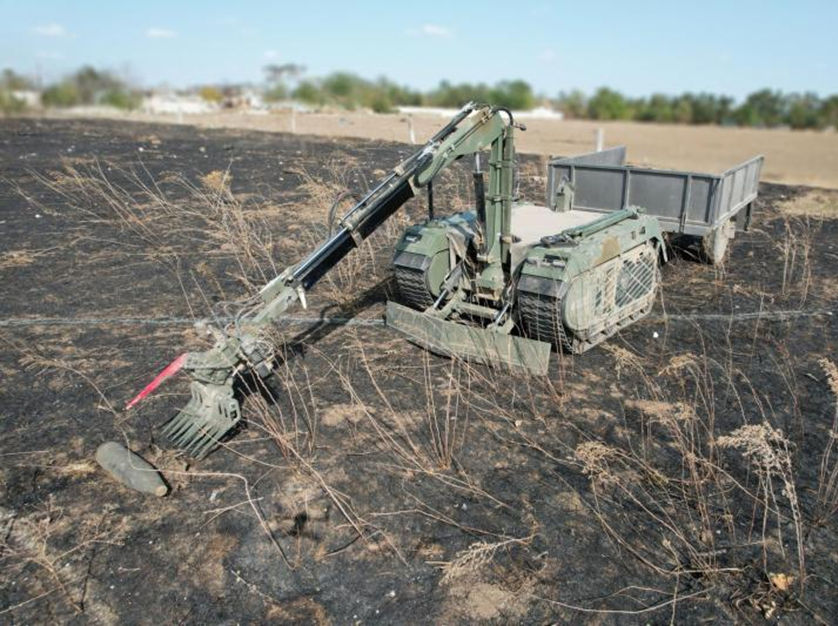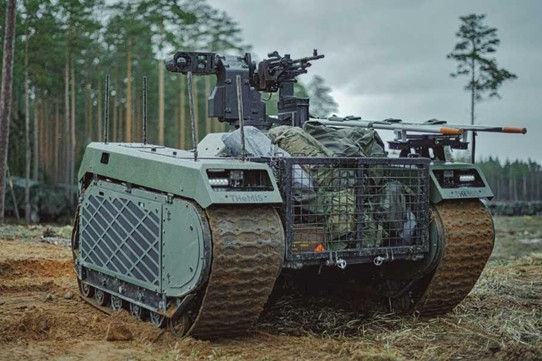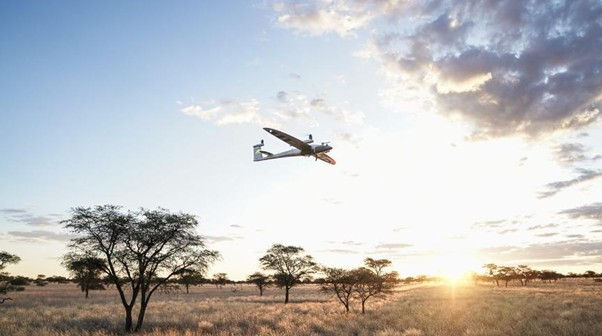Unmanned Allies: European Innovation Supporting Ukraine
- Challenger Research

- Jun 9
- 8 min read
Dr. J Reeves
June 9, 2025

Highlights
Despite being outnumbered 3-1 in manpower, Ukraine limited Russian gains to just 0.6% of territory over the past year, with Russia suffering an estimated 1,500 casualties daily.
Ukraine’s European allies have provided several niche technological advantages, unlike Russia, whose exodus of talent leaves them scrambling to keep up with Ukrainian innovations.
Operation Spiderweb exemplified Ukraine's cost-effective innovations, using FPV drones to destroy 10% of Russia’s strategic bomber fleet, as estimated by US and German analysts.
Milrem’s THeMIS has provided autonomous systems that enhance battlefield efficiency, contributing to Ukraine’s technological advantage.
Helsing, a European defence company, has rapidly deployed AI-driven tools to assist in operational decision-making amid evolving conflict conditions.
The French car company, Renault, has agreed to construct FPV drones for both France and Ukraine.
Ukraine's Secret Weapon
For 3 years, Ukraine has faced a stark numerical disadvantage on the battlefield, claiming they are outnumbered by a ratio of 3-1 in manpower, with an even greater disparity in equipment. On paper, Russia should be advancing through Ukraine with overwhelming force. Yet, as of May 2025, the reality on the ground tells a different story. Ukrainian officials report that over the past twelve months; Russia has captured just 0.6 percent of Ukrainian territory at the staggering cost of approximately one thousand five hundred casualties per day.
The situation with equipment is equally revealing. According to forecasts by the International Institute for Strategic Studies, at current rates of loss, Russia could exhaust its inventory of main battle tanks by 2026. In addition, satellite imagery and independent defence assessments indicate that Russia's once vast reserves of Soviet era armoured vehicles may also be depleted by 2025 or 2026.
This is not due to a lack of intent. In an interview with Ukrinform on 25 May, Oleg Ivashchenko, head of Ukraine’s Foreign Intelligence Service, made the position clear: “Their desire has not changed. They still want total control over Ukraine.”
How did we get here?
The problem, he says, lies elsewhere. “They are exhausted. Technologically, economically, and diplomatically.”
The economic and diplomatic aspects, including international sanctions, deteriorating relations with the West, and shifting developments in Africa and across the global South, are well recognised and widely analysed. This article will instead focus on the technological dimension of Russia’s exhaustion. Not on the large volumes of artillery, missiles and armoured vehicles where Russia continues to maintain an advantage in raw numbers, but on the smaller, purpose-built systems that deliver cost effective and asymmetric advantages on the battlefield. It is in this area, where flexibility, speed and precision matter most, that Russia struggles.
The central insight from this analysis is unmistakable: while Russia is capable of mobilising substantial industrial capacity to support its war in Ukraine, it lacks the most vital resource for long-term strategic advantage - human capital. The departure of a significant portion of the country's scientific, technical and entrepreneurial talent has critically undermined its capacity for innovation. Manufacturing alone cannot compensate for the loss of its brightest engineers, academics and start-up founders.
In contrast, Ukraine's allies have embraced a new doctrine shaped by urgency, efficiency and adaptability. In the current battlespace, it is speed and cost that determine success. Technologies and tactics are being developed and deployed not over years, but within a matter of weeks. This article examines how Ukraine's partners have responded to this shift, harnessing ingenuity and rapid iteration to meet the demands of a constantly evolving conflict. This was best showcased with operation spiderweb – a mission that saw Russia lose around 10% of its strategic bomber fleet to a swarm of cheap first-person view (FPV) drones - according to US and German estimates.
By 2023, approximately 900,000 people had emigrated from Russia, including around 2,500 scientists and an estimated 100,000 IT professionals. The impact has been deeply felt in business and technology sectors alike. Nebius, an AI cloud infrastructure company backed by 700 million US dollars in funding from Nvidia and Accel, was established from Yandex’s international operations. These were restructured to operate independently of Russia following the 2022 invasion. Today, the company employs over 1,300 professionals, many of whom are former Yandex employees who left the country in response to the geopolitical situation.
This article looks at some of the ingenious European innovations helping Ukraine exploit their asymmetrical advantages, helping to compensate for lower manpower and industrial capabilities.
Unmanned & Autonomous Systems
Unmanned systems like drones can do everything but take territory. Despite technological advancements, armies still require manpower to take (and hold) objectives. As a result, unmanned and autonomous systems have an asymmetrical advantage for defenders who seek to inflict maximum damage with minimum troops.
Milrem Robotics: THeMIS

THeMIS UGV with autocannon and cargo modules (Milrem 2025).
Not all unmanned systems are in the air. THeMIS is an unmanned ground vehicle (UGV) that is supporting ground forces in Ukraine. Made by Milrem Robotics in Estonia as part of a large European partnership, THeMIS is a modular operated vehicle with autonomous options like return to home features. It is designed to support ground troops. 15 UGVs have been in operation in Ukraine, carrying weapons, and apparatus to carry injured troops. THeMIS has now been purchased by 19 nations, including 8 NATO members: Estonia, France, Germany, the Netherlands, Norway, Spain, the UK, and the US. Sat systems like Starlink can allow hundreds of miles of range and multi-vehicle operations per operator - ideal for frontline support.
Key Contributions and Operational Roles
Logistics and Casualty Evacuation: THeMIS vehicles have been used extensively for transporting ammunition, equipment, and supplies to frontline positions, particularly in areas inaccessible to conventional vehicles or where the risk to human life is high. They have also played a crucial role in casualty evacuation, enabling wounded soldiers to be moved from the battlefield without exposing medics to enemy fire.
Mine Clearance and Route Demining: Several THeMIS units are equipped with specialized payloads for mine detection and clearance, supporting Ukrainian engineers in removing anti-tank mines and unexploded ordnance (UXO). This has significantly reduced the risk to personnel during demining operations.
Combat Support and Reconnaissance: Armed variants of THeMIS have been supplied to Ukraine, expanding their utility to include direct combat support and intelligence-gathering missions. These platforms are being adapted for anti-tank, reconnaissance, and engineering tasks, based on operational feedback from Ukrainian forces.
Adaptation to Battlefield Conditions: Ukrainian operators have highlighted THeMIS’s effectiveness during challenging conditions, such as the muddy “bezdorizhzhia” season, where its mobility and low profile make it less susceptible to detection and immobilization compared to heavier vehicles.
Quantum-Systems: Ukraine High Tech Aerial Recon
Quantum-Systems, a Munich-based leader in unmanned aerial systems, has been at the forefront of integrating artificial intelligence and autonomous capabilities into battlefield drones. In April Ukrainian company Frontline and German firm Quantum-Systems signed a memorandum of cooperation in the field of defense technology production and integration, according to Militarnyi. This partnership on the whole aims to accelerate the development and deployment of next-generation aerial reconnaissance platforms.

Quantum Systems Trinity Pro eVTOL fixed wing drone (Quantum Systems 2025).
Key Contributions
AI-Enabled Reconnaissance: Quantum-Systems’ Vector and Trinity drones, now co-produced with Ukrainian partners, feature onboard AI for real-time image analysis and target identification. This reduces the latency between data collection and actionable intelligence, a critical advantage in fast-moving operational environments.
Autonomous Operations: The introduction of Drone Port infrastructure allows for automated drone launch, recovery, and recharging, enabling persistent surveillance with minimal operator intervention.
Localized Production: By establishing manufacturing capabilities within Ukraine (doubling its Ukraine production capacity in February), Quantum-Systems is not only meeting urgent battlefield demands but also facilitating technology transfer and fostering local expertise.
These drones provide Ukrainian forces with enhanced situational awareness, supporting precision targeting and rapid decision-making. The collaboration exemplifies how European firms can effectively integrate with local partners to deliver scalable, high-impact solutions in wartime conditions. The partnership includes technological and industrial collaboration, joint R&D projects, and the integration of Ukrainian innovations into the European defense system.
Helsing AI

HX-2 Helsing drones on top of casing (Helsing 2025)
While drones dominate the skies, an equally fierce and largely invisible war rages across the electromagnetic spectrum. Leading the charge in this domain is Helsing AI, a Berlin-based defence startup that has rapidly become a key player in Ukraine’s electronic warfare strategy.
In February 2025, Helsing signed a formal agreement with the Ukrainian government to supply advanced artificial intelligence technologies for drone operations, offering both hardware and software tailored to the specific demands of the battlefield. That same month, the company announced the completion of its first Resilience Factory in southern Germany - the first of several to be built across Europe - and confirmed plans to produce six thousand HX2 drones for Ukraine. These electrically powered drones are software driven, swarm capable, and designed for mass production. They can operate with limited connectivity, reidentify and engage targets autonomously, and resist electronic jamming, while a human operator remains in control at all times.
Following a valuation of €4.95 billion in mid-2024, Helsing pledged a £350 million investment in the United Kingdom, including a new manufacturing facility, reinforcing its position as one of the largest strike drone producers in the world. This expansion is necessary, as Helsing intends to send 6,000 HX-2 strike drones to Ukraine, after a prior order of 4,000 of the older HF-1 drone models.
Renault FBV Drone Production

FPV drone with munition payload (The Economist via Getty Images 2025).
As reported last week by French public radio, automotive giant Renault Group will be taking the lead in drone production. In June 2025, it was announced that Renault, in collaboration with a French defence SME, will establish drone manufacturing lines on Ukrainian territory. This move marks a significant deepening of the "win-win partnership" between France and Ukraine, combining Ukrainian battlefield experience and innovation in drone tactics with France’s industrial and technological strengths.
This development is more than a bilateral effort—it reflects a growing, continent-wide mobilisation. With Renault stepping in, it’s clear that major European players from across sectors are now getting on board, recognising both the urgency and the opportunity in supporting Ukraine through unmanned systems.
The drones produced under this partnership will meet both Ukrainian defence demands and serve as training assets for the French military. Ukraine aims to deploy over 4.5 million drones in 2025, with these systems reportedly responsible for around 70% of Russian equipment losses at the front, according to Le Monde. Meanwhile, the French armed forces, which currently operate several thousand drones, are looking to close the gap in their tactical capabilities.
Although the French defence minister did not disclose the specific models to be manufactured, he confirmed the drones would be deployed by Ukrainian forces and would support French units in maintaining realistic, operationally relevant training. Ukrainian operators will provide critical feedback based on frontline experience. “We’re embarking on a completely unprecedented partnership,” the minister stated.
Conclusion
Ukraine’s resilience on the battlefield has come to be defined by rapidly deployed innovations. While Russia continues to draw on vast reserves of equipment and industrial capacity, it is increasingly held back by a critical shortage of skilled people, technological stagnation, and strategic inflexibility. Ukraine, by contrast, has turned necessity into invention, building a defence ecosystem driven by speed, adaptability and precision through partnerships with advanced AI firms, agile startups and even automotive manufacturers.
This conflict is no longer decided solely by tanks and artillery, but by autonomous systems, software driven drones and integrated technologies. Ukraine has harnessed creativity and responsiveness to transform small, smart and cost-effective tools into strategic assets. It has shown that with the right partnerships and mindset, a nation can offset overwhelming disadvantages in manpower and firepower.
Helsing’s AI powered drones have brought cutting edge electronic warfare capabilities to Ukrainian forces. Quantum Systems is enabling real time aerial intelligence through locally produced autonomous drones. Milrem’s THeMIS ground vehicles are delivering logistical support, combat capability and casualty evacuation in the most dangerous environments. Renault’s move to establish drone production lines in Ukraine signals a wider drone production mobilisation across Europe’s industrial base, spurred on by the success of Operation Spider’s Web.
Russia’s losses are not just measured in troops and vehicles, but in time, talent and initiative. While Ukraine continues to face immense challenges (particularly manpower), it does so with a growing advantage in the domains that increasingly define modern warfare. The war is far from over, but the nature of victory is already changing.
References
Duchêne S. (2025) 'Win-win partnership': French companies to manufacture drones in Ukraine, Jun 8. Euro News. https://www.euronews.com/my-europe/2025/06/08/win-win-partnership-french-companies-to-manufacture-drones-in-ukraine
Helsing. (2025) Helsing to produce 6,000 additional strike drones for Ukraine, Press Release. https://helsing.ai/newsroom/helsing-to-produce-6000-additional-strike-drones-for-ukraine.
Mukhina O. (2025) Battle-tested Ukrainian tech to enter European defense system through German partnership, Apr 15. EuroMaidan Press. https://euromaidanpress.com/2025/04/15/battle-tested-ukrainian-tech-to-enter-european-defense-system-through-german-partnership/
Tril M. (2025) French carmaker to produce military drones in Ukraine alongside defence firm, Jun 7. EuroMaidan Press. https://euromaidanpress.com/2025/06/07/french-carmaker-to-produce-military-drones-in-ukraine-alongside-defence-firm/
Quantum Systems. (2025) Quantum Systems is doubling production capacity in Ukraine, Feb 14. https://quantum-systems.com/blog/2025/02/14/quantum-systems-is-doubling-production-capacity-in-ukraine-at-a-critical-moment/

_edited_edited.png)






Comments